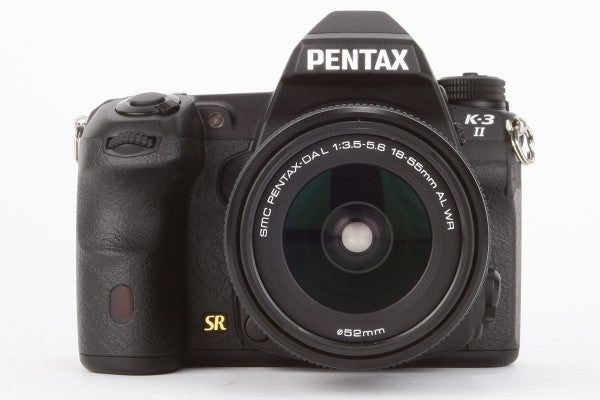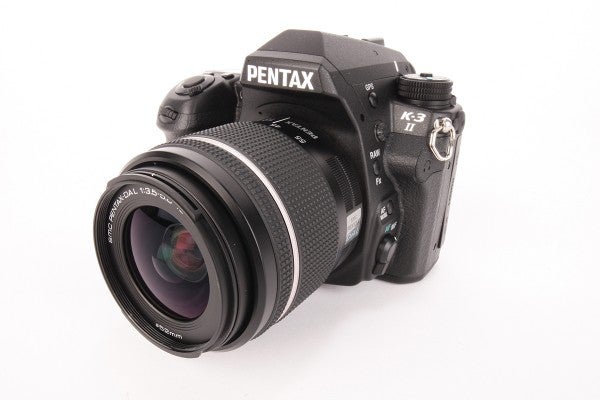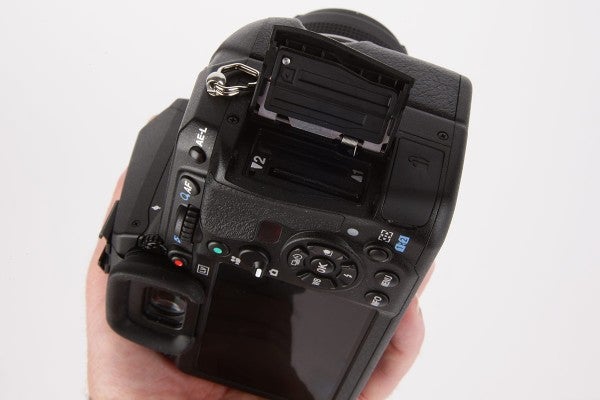The Pentax K-3 II aims to improve on the K-3 with better continuous autofocusing, in-body image stabilisation and never before seen features like Pixel Shift Resolution and Astrotracer. Callum McInernery-Riley investigates
Pentax K-3 II Review
At a glance
- 24.35-million-pixel CMOS APS-C sensor
- ISO 100-51,200
- 3.2in 1,037,000-dot resolution TFT LCD
- 8.3fps continuous shooting
- 27-point auto focusing system
- Price £769.99 (body only)
After nearly two years, Ricoh has updated the Pentax K-3 with a second version, the Pentax K-3 II. Designed to be the flagship Pentax APS-C DSLR, the K-3 II sits at the very top of the K-series of DSLR cameras.
Many of the original Pentax K-3’s great features remain, such as the robust weather-sealed body construction with distinctive large grip, the same 24.35-million-pixel CMOS sensor, 27 AF points, 8.3fps shooting speed and 86,000-pixel metering system.
However, there are also a few key differences. The pop-up flash has been removed to house a GPS unit as well as a unique Astrotracer, designed for taking photos of the stars and planets. There’s also a high-resolution Pixel Shift Resolution mode, improved 4.5-stop in-body image stabilisation and better continuous focusing.
While it faces stiff competition for the title of best APS-C DSLR from the likes of the Canon EOS 70D, the Nikon D7200 and the Sony Alpha 77 II, does the K-3 II hold a place as the best all-rounder?
Pentax K-3 II Review – Features

The Pentax K-3 II features an APS-C-size 24.35-million-pixel CMOS sensor – the same as that of the original Pentax K-3.
A feature unique to Pentax is how it works around issues to do with the anti-aliasing filter. Many camera manufacturers have removed the micro-blurring anti-aliasing filter to give images more detail, while risking the appearance of moiré patterning. Others avoid moiré by keeping the anti-aliasing filter, and instead choose to sacrifice some finer detail.
Pentax has an ingenious solution: it has an anti-aliasing simulator function that reduces moiré by using the in-body image stabilisation system to blur the image a tiny amount.
To allow photographers to balance the advantages of capturing finer detail against the effects of aliasing, depending on the type of subject they’re shooting, three settings can be found in the menu; namely Off, Type 1, and Type 2, with the latter giving a larger anti-aliasing effect. The problem is knowing in advance which would be best for any specific subject, and to this end, a bracketing mode takes shots sequentially at the three settings, so you can select the most appropriate afterwards.
The in-body image stabilisation itself – called Shake Reduction by Ricoh – has been upgraded, and thanks to a new high-precision gyro sensor, it now achieves 4.5 stops of stabilisaton, compared to 3.5 stops on the K-3 (both cameras were rated using CIPA standard testing). As usual, it works with all lenses. For those shooting in lowlight or anyone handholding the camera for shots at slow shutter speeds, this is an incredibly useful feature you won’t see on DSLRs outside of the Pentax brand.
The Pentax K-3 II offers an ISO sensitivity range of 100-51,200, and files can be captured in either JPEG or 14-bit raw formats. Like other Pentax cameras, users can either shoot in Adobe DNG or Pentax PEF format when it comes to selecting raw files. Adobe DNG is advantageous for some, as it works with older versions of software and allows many users to edit raw files without downloading further software.
Both the K-3 and K-3 II’s PRIME III processing engines support shooting at an impressive maximum speed of 8.3fps in Continuous H mode for a total of 60 JPEGs or 23 raw images.
In Continuous M mode, a rate of 4.5fps allows for a total of 100 JPEGs or 23 raw, and Continuous L mode gives a speed of 3fps and allows 200 JPEGs or 53 raw images to write to the card before the buffer is full. For comparison, this sits above the Nikon D7200’s 6fps shooting speed but below the 12fps of the Sony Alpha 77 II.

In-body image stabilisation upgrades enhance the K-3 II’s low-light potential
Where the Pentax K-3 housed a pop-up flash on its top, the K-3 II has instead made room to fit a GPS unit (previously, the Pentax O-GPS1 was a costly optional extra). Used to track and add geographical locations to your photos, GPS allows photographers to look back at the places they’ve visited and isolate where they took a particular shot.
In the K-3 II, Pentax has taken it one step further and ensured the GPS tracker works with a feature called Astrotracer. If you’ve ever tried to take a long-exposure shot of the night sky, you’ll have likely come up against the stars blurring in an arc due to the Earth’s rotation. Using the sensor’s stabilisation motors and the data gathered from the GPS, Astrotracer makes it possible to rotate the sensor to match the rotation of the earth. This allows users to achieve long exposures (up to five minutes) and track anything in the night sky including stars, planets, or nebulae.
There’s no Wi-Fi connectivity included, but there is compatibility with Eyefi SD memory cards and Pentax Flucards. Eyefi cards allow users to wirelessly transfer images and videos directly to their smartphone or tablet, while the Pentax Flucard offers the option of wireless remote control of the camera on a smart device, including live view.

While the Flucard is able to give the K-3 II Wi-fi functionality, in use it’s a little clunky
However, it’s rather slow, laggy and can’t compete against the Wi-Fi we see on many cameras today. After seeing proper Wi-Fi and NFC connectivity included on the Pentax K-S2, it’s disappointing to not see it in the K-3 II.
Video can be captured on the Pentax K-3 II at Full HD resolution of 1920×1080 pixels, and at a choice of frame rates including 60p/50p/30p/25p/24p, while 1280×720 pixel resolution is also offered at 60p/50p/30p/25p/24p. Additionally, there are standard mic and headphone ports included on the camera body, allowing capture of higher-quality audio.




